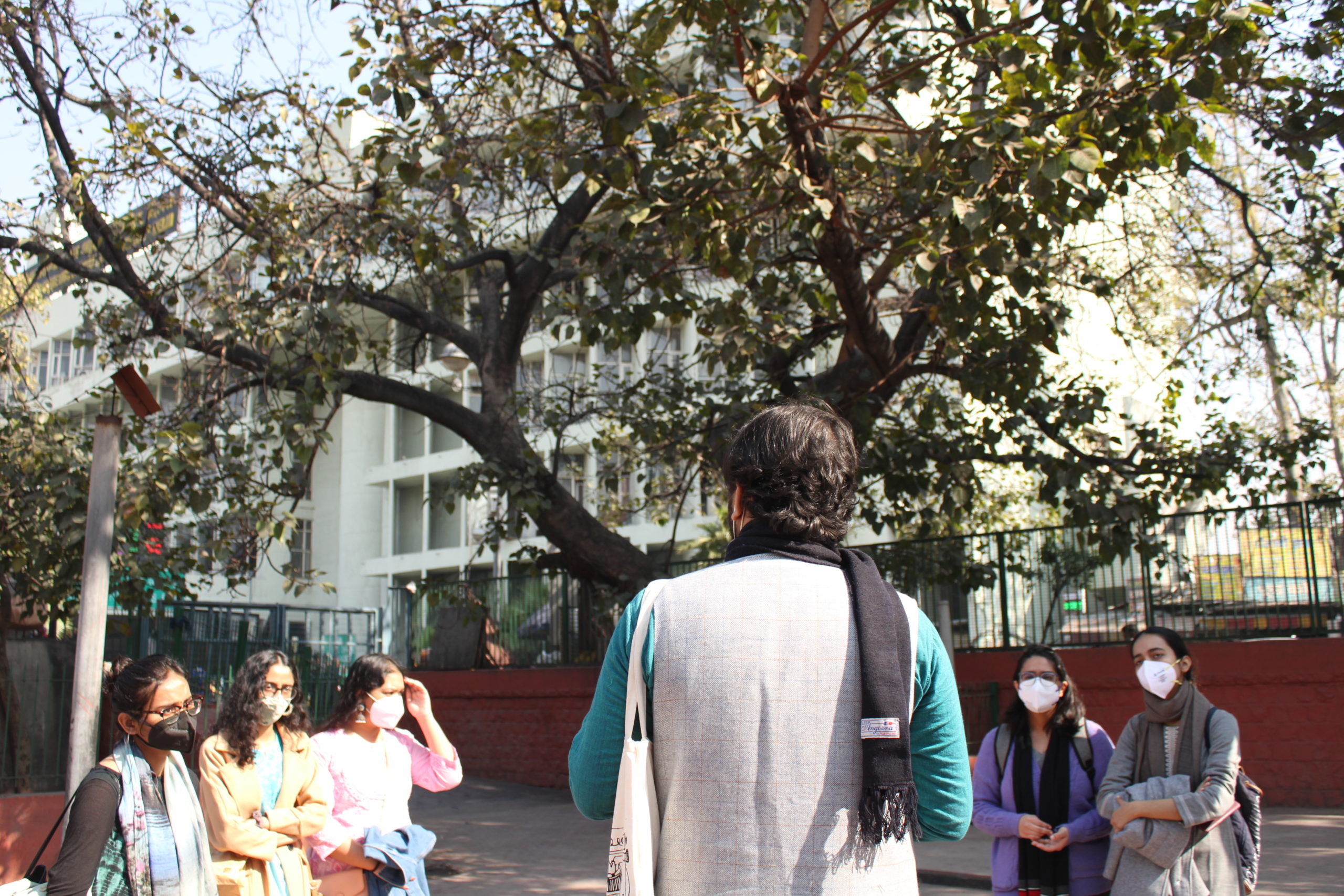Delhi-ites are rediscovering their heritage and enjoying being outdoors, stomping out the tedium of lockdowns
“Kya cinema ki dehleez par sheher khatam ho jata hai?” (Does the city end at the threshold of cinema?) asked the young walk leader Srajit, as he stood outside a cinema hall in Kashmere Gate with a group of walk enthusiasts.
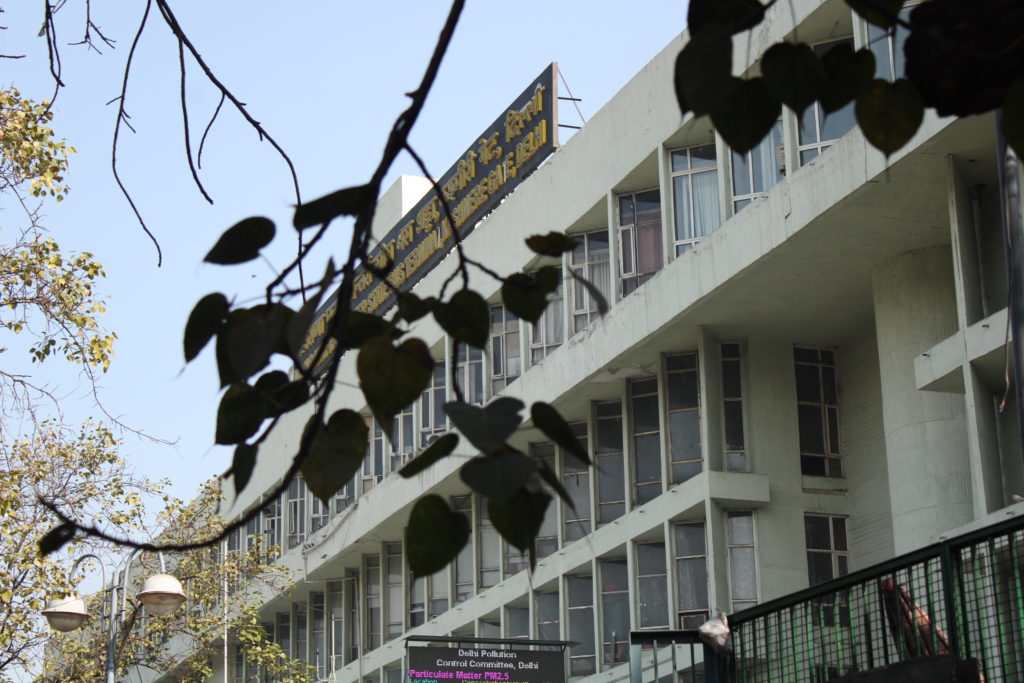
Everyone seemed to be very keen on a social event that involved a walk down memory lane, literally, as they listened to legends about structures of cultural significance in the old parts of Delhi. Centred around old cinema halls, this heritage walk was focused more on the social and cultural history of four distinctive cinemas in the walled city, diving deep into their evolution and degeneration in what is also known as Old Delhi.
This heritage walk, like many others, was being conducted after two years of an on-and-off pandemic-induced lockdown across the country. On the other end of the city, Sohail Hashmi, an acclaimed figure in the heritage circuit, was also conducting a walk around the Chandini Chowk. Srajit was also conducting a second walk in the Mandi House area, telling participants about its architectural history.
These walks have always been a low-key cultural event for locals as well as migrants, away from high-rise commercial structures across the capital. Those ones who do engage with these events become ardently involved in Delhi’s heritage and history. More so now, since Covid restrictions have been eased and the unpopular Delhi winter has begun to subside.
Virtual walks were attempted during the lockdown by figures like Rana Safvi, a well-known name in heritage circles. According to Joydeep Daey, “Things changed post-2020. One of the most affected sectors was the tourism and heritage sector. Some left this field permanently while others started to look into other sectors to sustain themselves and their families. To keep the spirit of the heritage sector alive, people started organizing walks and tours in the confines of four walls, with small 15.6 inch laptop devices, because audiences were locked in their homes.” But such walks failed to fill the void created by the absence of physical, real-time structures that make a heritage walk so meaningful.
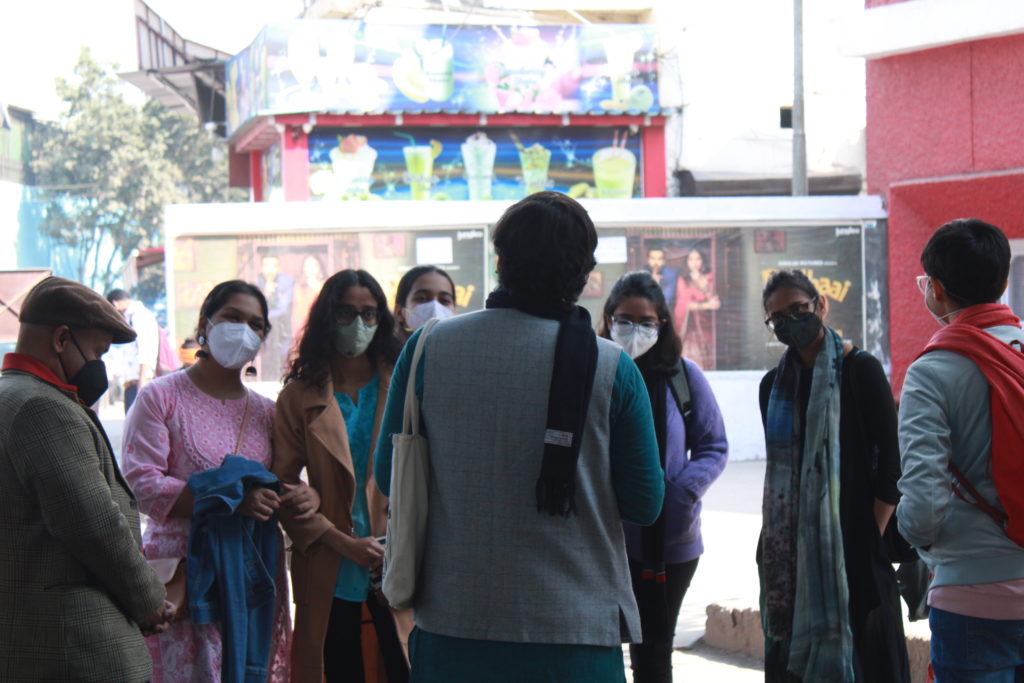
Dushyant, another walk leader in Delhi with the Indian National Trust for Art and Cultural Heritage (INTACH), humorously refers to this post-lockdown rise in cultural participation in the city as “revenge tourism”, a term that seems to be common amongst heritage walkers like Srajit and his colleague Joydeep Daey. Revenge tourism refers to the phenomenon where people desire to break their monotonous pandemic routine by resorting to travel.
“For so many months, we were caught up in our rooms, in our little lives that we ended up spending even more than we usually do. People now think that they really don’t know whether tomorrow the money that they are saving will be utilised or not. Life is so uncertain, so I might as well have the luxury to enjoy life now. So, we are now trying to satisfy all those cravings and desires that were pent up inside us for so many months of lockdown,” says Dushyant.
This idea of ‘revenge tourism’ becomes relevant at a time when the economy is opening up again after a long pause. While people were frustrated with indoor activities and limitations to movement, the heritage sector was hit more harshly than many other sectors with the sudden ban on travel and tourism in light of the Covid outbreak back in 2020.
“Now, after almost two years of lockdown, the heritage sector has started to boom again. Walk Leaders like myself who used to organise one walk a day on a pre-pandemic weekend have now started organising not one or two, but almost four walks in a day with all the weekends booked,” Daey says.
Amongst the four cinemas covered in the walk led by Srajit, only Ritz cinema is functional to this date, surviving several national crises, economic downfalls and the ongoing pandemic.
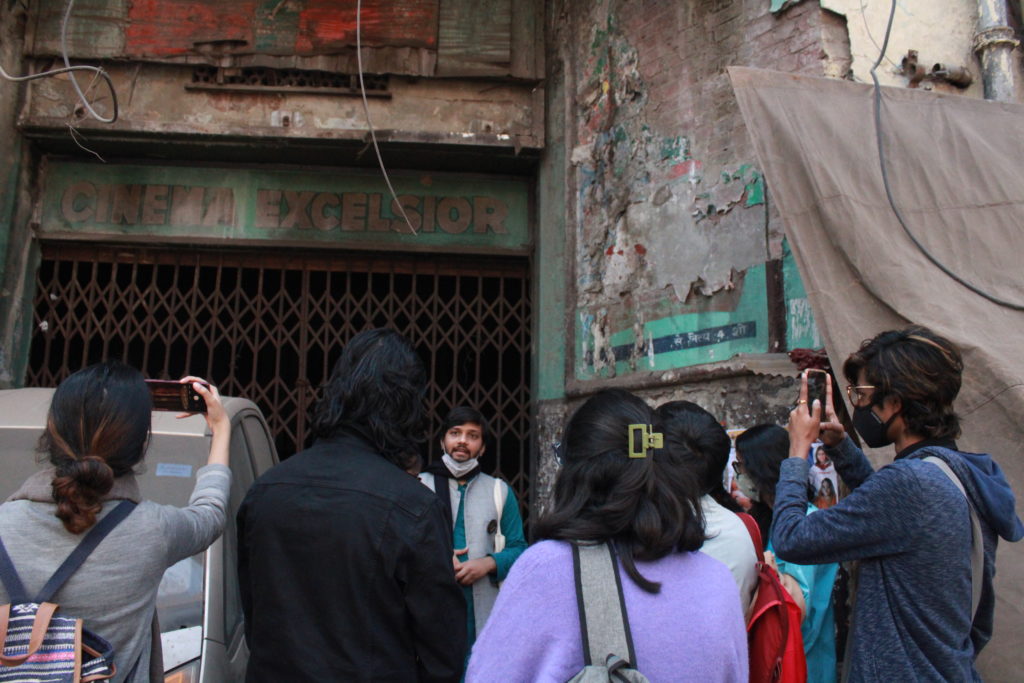
The story, as per the walk leader, around why this particular cinema is still operational is one that left a strong imprint on many. It revolves around an attempt at dodging death by Jagat Narain Seth, film distributor and owner of three major theatres in the old city including Ritz and the Jagat Cinema. “The theatre, which is down the road from Nigambodh Ghat and the Nicholson cemetery — both of which are supposed to be the final resting place of the dead — was perceived as an inauspicious location for a commercial venture by many,” Srajit explains. Hence, many stories surfaced around how his cinema business was destined to an unsuccessful end, given its ‘inauspicious’ location.
Srajit adds, “A flamboyant Seth decided to defeat death and popular predictions when the cinema had opened up. So, from reserving cinema seats for the ’respectable’ women (who were otherwise restricted from visiting cinema theatres back then) to his attempt at showing ‘C-Grade’ films in the early morning to fill up seats, Jagat and his son Kaka Seth resorted to it all to keep the cinema relevant.” The cinema space, which bridged the social hierarchies in its own commercial ways, also thrived through these organised strategies that brought audiences under one roof, from all walks of life, for the love of movies.
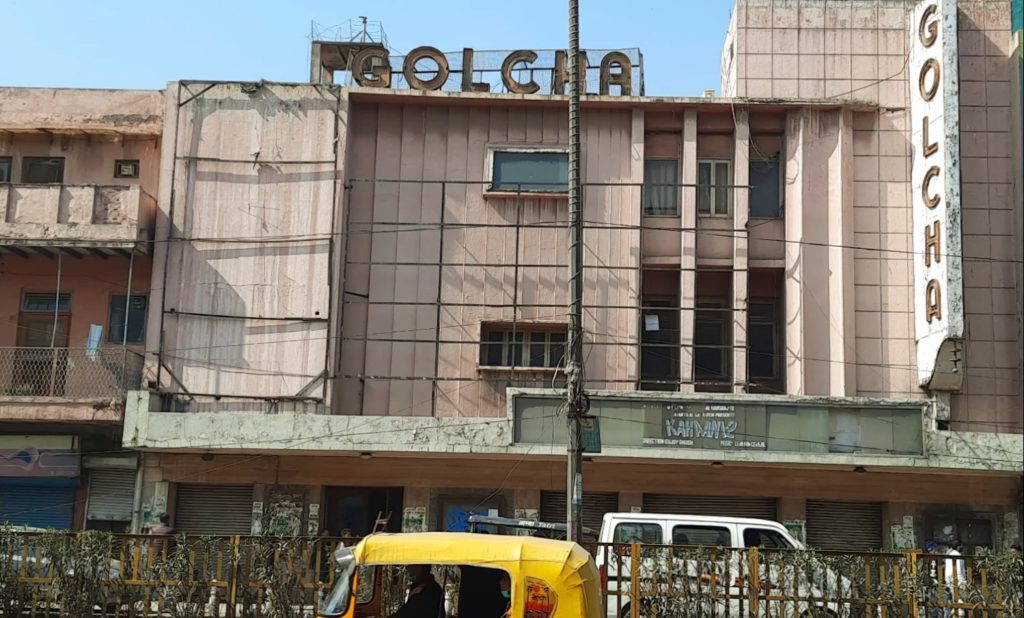
The walk which began at around 11 am at the Kashmere Gate Inter-State Bus Terminal (ISBT) or the metro station gate which opens up to the ISBT, went all the way to the Cinema Excelsior at Sirkiwalan in Lal Kuan. The walk leader first introduced the group to the nearby Ritz at Kashmere Gate, which was then followed by an e-rickshaw trip to Golcha in Daryaganj. The group then walked into the lanes leading to Jama Masjid which houses the building of Jagat cinema.
From here, the last trip on e-rickshaws followed, to meet at the Cinema Excelsior around 1 pm. The walk was eventually put to an end with a full-course meal at the famous Rehmatullah Hotel in Matia Mahal around 2 pm or so.
With day temperatures in the sweet spot, and increased tourist mobility around the country, more heritage walks are expecting better footfall as they recover from the boredom of the last two years.

